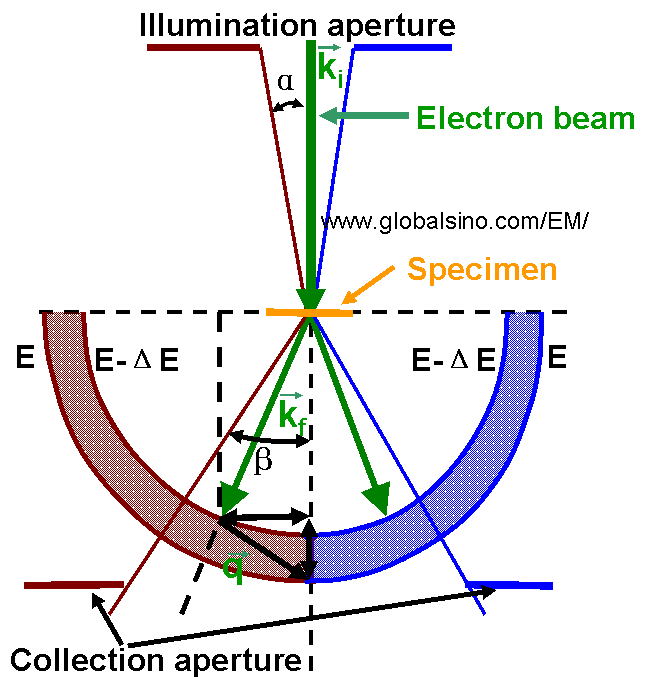|
|
Transferred Wave Vector after Electron Scattering with Matter
- Practical Electron Microscopy and Database -
- An Online Book -
|
|
https://www.globalsino.com/EM/
|
|
This book (Practical Electron Microscopy and Database) is a reference for TEM and SEM students, operators, engineers, technicians, managers, and researchers.
|
=================================================================================
For instance, for TEM (transmission electron microscope), the primary electron beam typically with voltages of 100 to 300 keV at convergence half angle α interacts with a specimen sufficiently thin as shown in Figure 4362. An aperture (e.g. objective aperture) defines at the level of the specimen a solid angle of collection (acceptance half angle β of a few mrad). During this interaction, the occurred scattering events provide the information of momentum transfer q (called transferred wave vector or scattering vector) and of energy transfer ΔE.

Figure 4362. Schematic diagram showing wave vector ki of incident electron, scattered electron
wave vector kf, transferred wave vector q, and energy transfer ΔE.
As shown in Figure 4362, if ki is the incident wave vector and kf is the scattered wave vector then the transferred wave vector q is simply the difference between the two vectors, q = ki − kf. It is important to point out that the direction of the vector q is taken as that of momentum transfer to the specimen that is opposite to the direction of the wavevector change of the incident electrons.
|
=================================================================================
The book author (Yougui Liao) welcomes your comments, suggestions, and corrections, please click here for submission. If you let book author know once you have cited this book, the brief information of your publication will appear on the “Times Cited” page.
|
|
